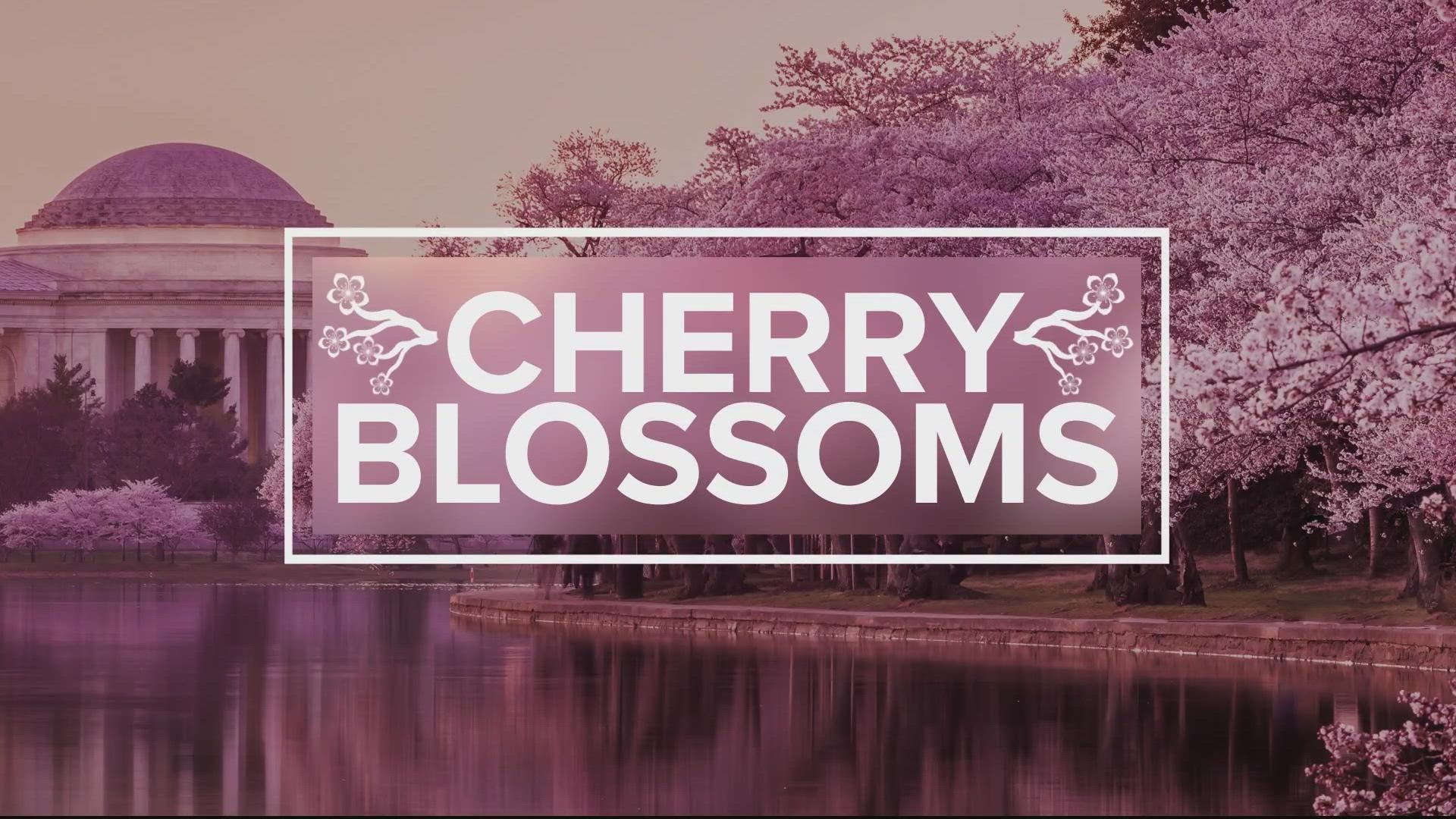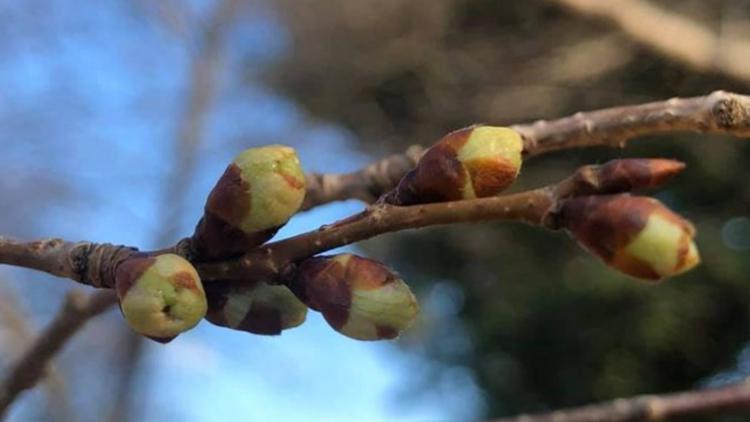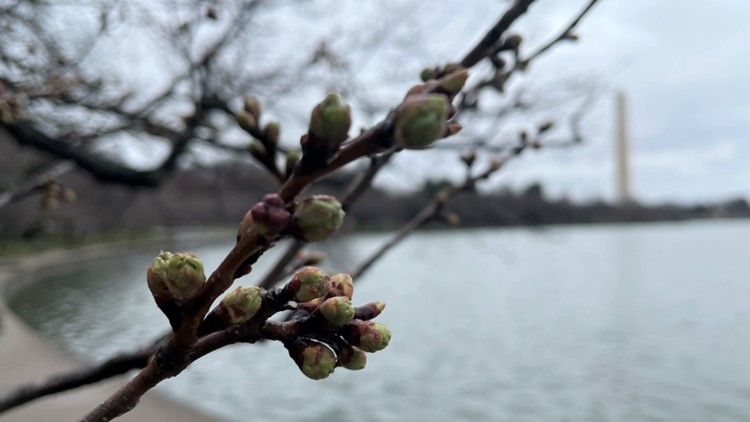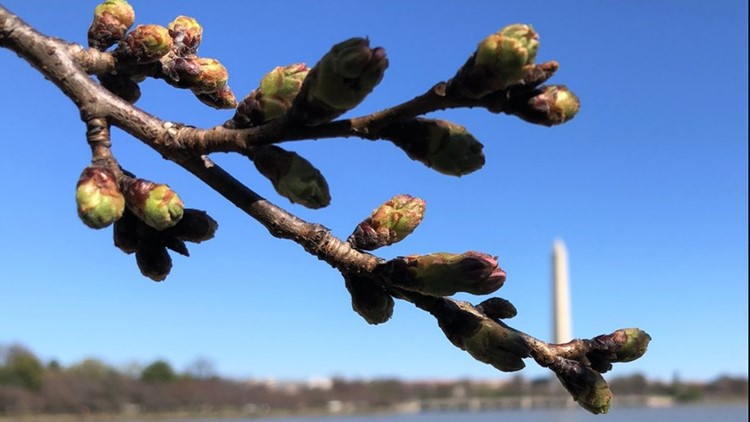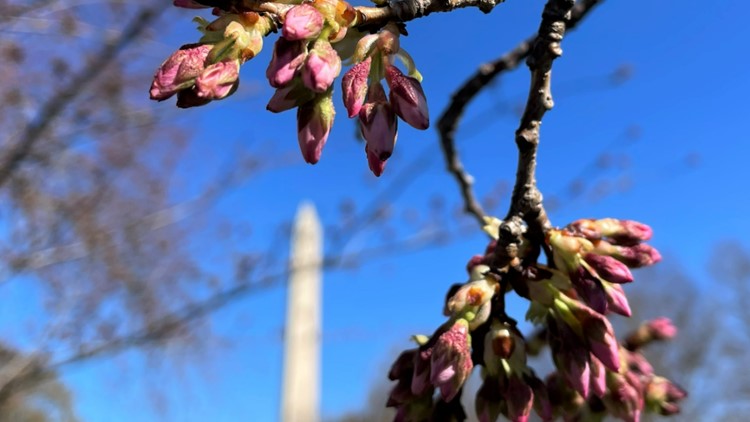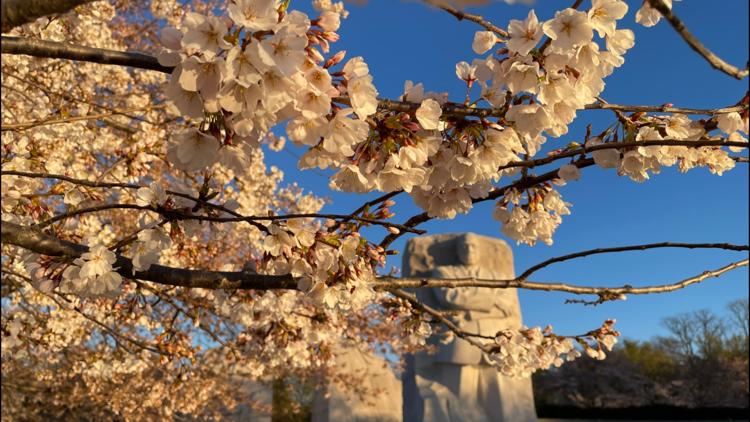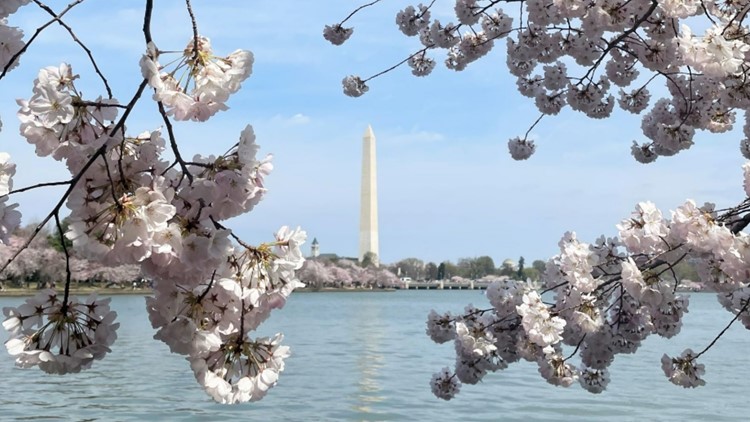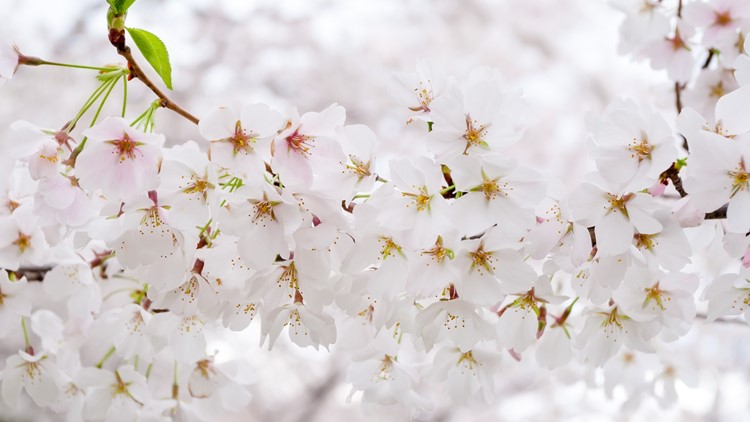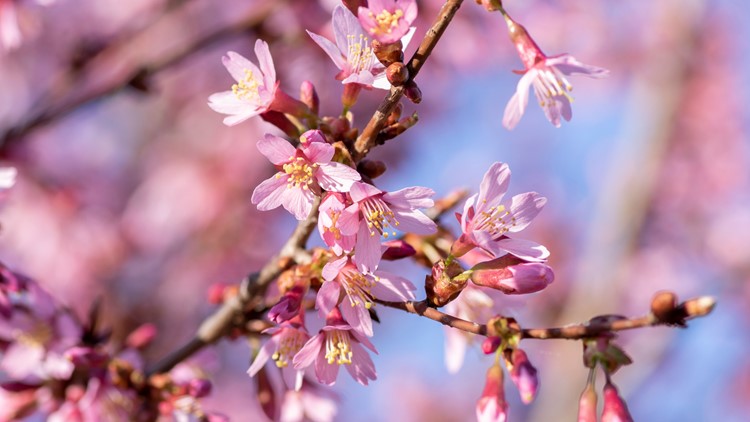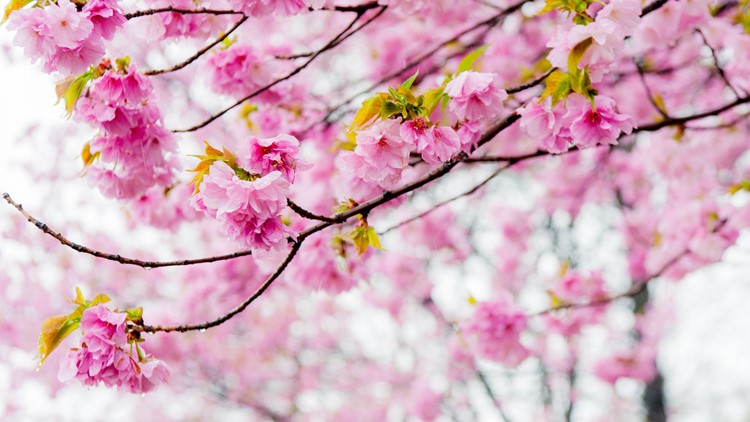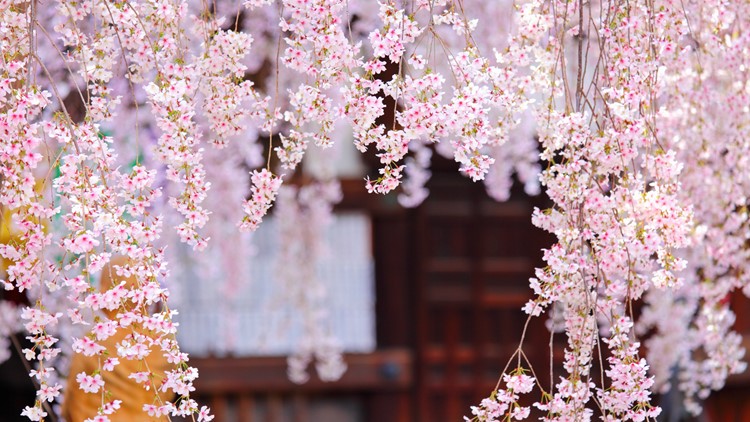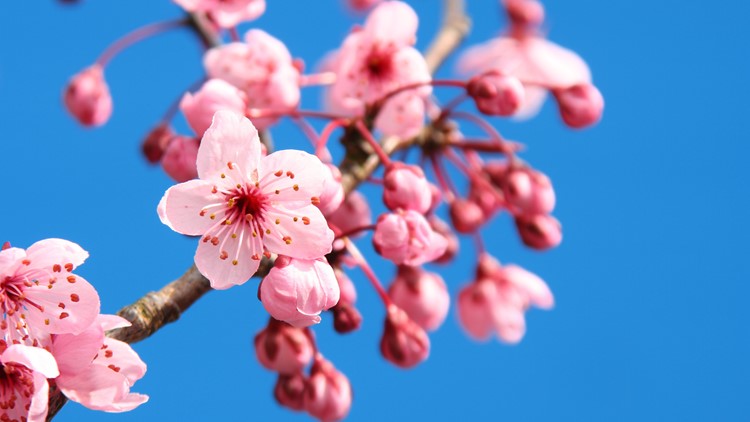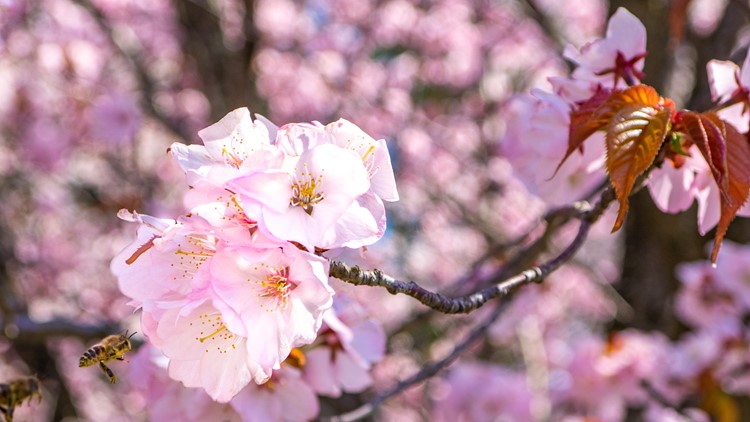WASHINGTON — The D.C. cherry blossoms continue to bloom, moving into stage 2 on Wednesday.
According to the National Park Service (NPS), the cherry trees officially started the process of budding on Feb. 23. On Wednesday, NPS confirmed the trees have moved to stage 2, meaning the florets are now visible.
NPS and Mayor Muriel Bowser announced Wednesday morning that D.C.'s iconic cherry blossoms are expected to reach peak bloom March 22-25.
Here are the six stages NPS tracks:
- Green bud
- Florets visible
- Extension of florets
- Peduncle elongation
- Puffy blossom
- Peak bloom
NPS confirmed D.C.'s indicator tree on the Tidal Basin began budding on Valentine's Day. There are several indicator trees that bloom ahead of the rest, so the National Park Service monitors their progress to determine when peak bloom for the rest of the basin may be.
Estimating peak bloom is a difficult process, keeping experts on their toes all the way up to announcement day. In 2021, peak bloom came about a week earlier than anticipated. The NPS uses a combination of temperature analyses, historical records and indicator trees to make their estimate every year.
Click here to learn more about how NPS uses indicator trees to predict peak bloom.
Weather's Influence
Weather can speed up or slow down the blooming process. Warmer weather helps the cherry blossoms bloom faster, while cold weather can slow down the growth.
One of the earliest peak blooms was March 15, 1990, and due to cold weather, one of the latest was April 18, 1958.
On Thursday, when NPS announced the blossoms had reached stage one, several parts of the DMV recorded record high temperatures, with Reagan National Airport hitting 81 degrees. However, the warm weather didn't last long, with Friday dropping to a high of 56 and a low of 31.
When we get a warm-up followed by a late freeze, it can prove detrimental to the cherry blossoms. Such was the case in 2017, when a late freeze between March 14-17 killed nearly half of the cherry blossoms. Peak bloom was March 25 that year.
Tracking the DC cherry blossoms
Climate Change Impact
NPS also has teams of scientists studying the impact of climate change on cherry blossoms, and what peak bloom data can tell us about climate change.
"Cherry tree dates vary from year to year, but the long-term trend shows earlier and earlier blooming," said NPS climate change scientist Patrick Gonzalez.
Since 1946, D.C.'s average temperature has increased by 1.6 degrees C per century, which is double the global rate. In flowering trees, heat breaks winter dormancy, so scientists believe earlier cherry blooming is caused by climate change.
"If we don't reduce emissions from cars, power plants and deforestation additional warming could advance spring blooming by another week to month by the end of the 21st century," Gonzalez said.
Flooding at the Tidal Basin is also a problem for the cherry blossoms. NPS says cherry trees are meant to grow on dry land and require fresh water. When the Tidal Basin floods, freshwater along with brackish water flows over the roots of the cherry trees. Brackish water is a mix of salt and fresh water.
The National Park Service is concerned that salt intrusion in the soil can weaken and eventually kill a cherry tree.
Types of Cherry Blossoms
The famous cherry blossoms around the Tidal Basin are mostly Yoshino cherry trees, which produce the white blossoms that create the white cloud effect. NPS says Yoshinos are a hybrid flower that was first introduced in 1872, now they are one of the most popular cultivated flowering cherry trees. There are actually 11 different types of cherry blossoms in and around D.C.

